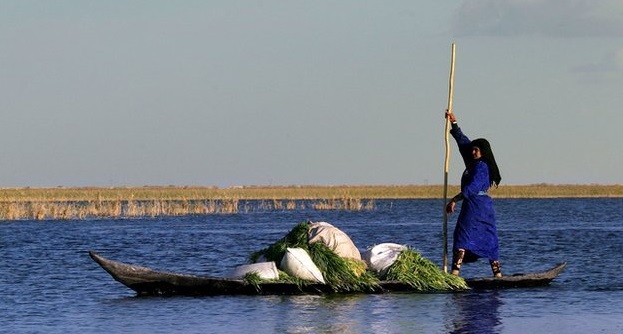Middle East architects Raya Ani and Zayad Motlib first told us about their plans for Mesopotamian Marshlands ecosystem and community earlier this year, and now they’re presenting their ideas to the first AIA Middle East conference in Dubai.
Human settlement in the marshlands dates back to 5,000 years ago, with mostly Shia tribesmen and women but the Persian War destroyed the ecosystem.
Recently named Iraq’s first national park, the Mesopotamian Marshlands in the south once comprised 8,800 square kilometers of permanent wetlands, and 20,000 square kilometers of marshlands when surrounding land became seasonally inundated.
As recently as 1991, up to 250,000 people lived in the marshlands, some of them in unique arched dwellings made of marsh reeds. Largely self-sufficient, the Ma’dan people mostly made their living on fishing and buffalo farming, and made crafts from cane – until the 1950s when Syria and Turkey started building dams.
But the biggest exodus took place following the Persian Gulf War. Saddam Hussein drained the marshlands and built giant canals, destroying the fragile ecosystem, and displacing hundreds of thousands of people.
The Mesopotamian Marshlands will never be what they used to be, but the husband and wife duo based in Dubai will explain to their peers at the AIA conference how they propose to help buttress efforts by local conservation groups such as Nature Iraq to revive what was once a thriving community.
Only they won’t rely on the same methods developed over hundreds of years to revive the marshlands; instead, Ani and Motlib will incorporate new strategies and technologies into their rehabilitation efforts.
“The vision is indicative of a shift from the traditional community structure to a sustainable, empowered community system,” the duo write in their AIA presentation brief.
Although they plan to maintain the region’s fishing and farming tradition, they also propose a system that not only produces wholesome organic food free of toxins and pesticides along with safe, potable water, but also generates renewable energy.
“It is conceived to inspire the indigenous people to be engaged in restoring their marsh environment while maintaining their traditions.”




















Comments